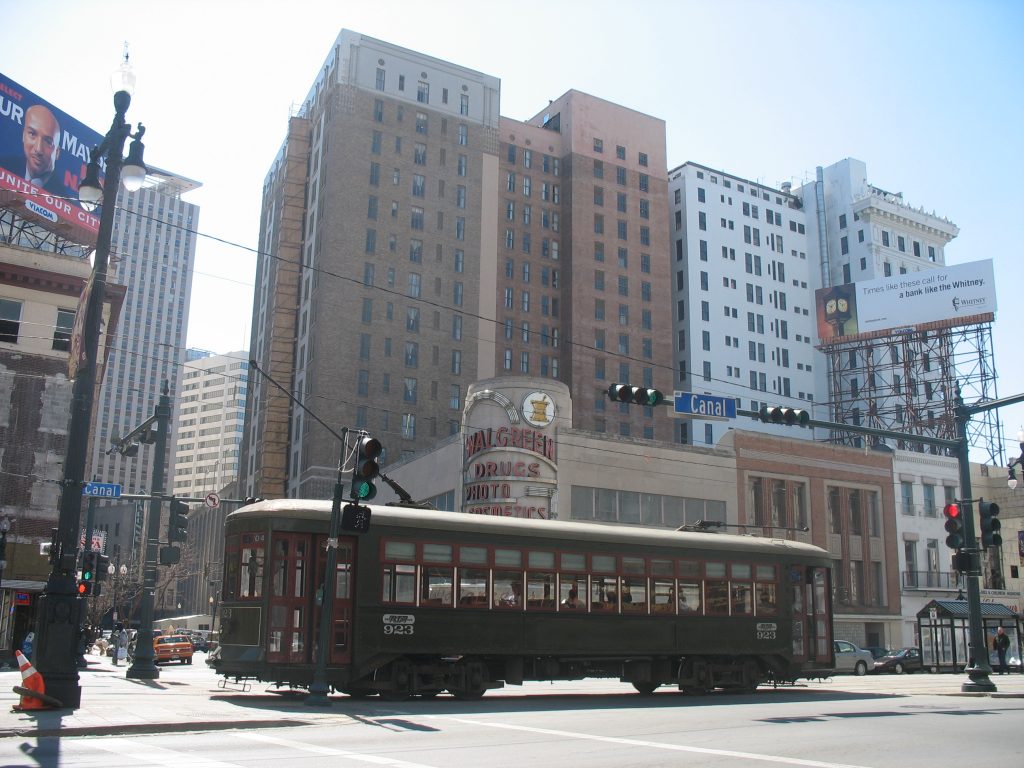 Car accidents can be an alarming ordeal. Especially, where there has been a fatality involved. Generally, when a vehicle has been physically involved in an accident, the driver can expect to have some liability. However, liability can also be involved where a driver requires a passenger to exit a vehicle, and the passenger is subsequently struck and killed by an unknown driver, hours later.
Car accidents can be an alarming ordeal. Especially, where there has been a fatality involved. Generally, when a vehicle has been physically involved in an accident, the driver can expect to have some liability. However, liability can also be involved where a driver requires a passenger to exit a vehicle, and the passenger is subsequently struck and killed by an unknown driver, hours later.
This horrific circumstance was an all too real reality for John Cefalu, when the trial court found Mr, Cefalu and his insurer USAA Casualty Insurance Company, (USAA), partially liable for the death of Piero Larrea. Mr. Cefalu was driving Mr. Larrera and some other friends back from a night of celebrating Mr. Cefalu’s birthday in New Orleans. Mr. Larrera allegedly became belligerent and Mr. Cefalu eventually pulled the car over on the side of the interstate and asked Mr. Larrera to exit the vehicle. Mr. Larrera was eventually hit and killed by an unknown phantom driver.
A lawsuit and subsequent trial followed that series of events. After three days of testimony a jury verdict was returned. The trial court accepted the jury’s verdict awarding damages to the plaintiff, the father of decedent, and the jury’s assignment of fault. The assignment of fault was as follows: Mr. Larrea, 54% at fault for his own death, Mr. Cefalu 28% at fault, and the hit and run driver 18% at fault. Mr. Cefalu and USAA appealed the trial court’s judgment to the Fourth Circuit Court of Appeal, arguing that improper jury instructions resulted in the adverse verdict. Mr. Larrea’s father answered the appeal seeking a modification or reversal of the judgment with respect to the allocation of fault to the unknown driver.
 Louisiana Personal Injury Lawyer Blog
Louisiana Personal Injury Lawyer Blog


 Louisiana worker’s compensation laws allow for injuries to only be charged at the usual cost for treatment. When a worker suffers an injury on the job the amount a hospital receives to pay for treatment may not always cover the cost of the treatment, but the hospital may not be able to recover for these losses.
Louisiana worker’s compensation laws allow for injuries to only be charged at the usual cost for treatment. When a worker suffers an injury on the job the amount a hospital receives to pay for treatment may not always cover the cost of the treatment, but the hospital may not be able to recover for these losses. If your hurt on the job your recourse will typically be through the workers compensation system. Once you are in that system you must play by the rules and follow all orders of the court. If you don’t your employer does have recourse to seek to limit your benefits. Such a situation is demonstrated below wherein Mr. Sims refusal to attend adult education lead to a lesson learned in reduction of workers compensation benefits 101.
If your hurt on the job your recourse will typically be through the workers compensation system. Once you are in that system you must play by the rules and follow all orders of the court. If you don’t your employer does have recourse to seek to limit your benefits. Such a situation is demonstrated below wherein Mr. Sims refusal to attend adult education lead to a lesson learned in reduction of workers compensation benefits 101. In 1997, Brandon Hirstius purchased a tract of land in St Tammany Parish. Nearly 14 years later, in 2011, Mr. Hirstius complained of an unauthorized utility pole on his property belonging to BellSouth Telecommunications, Inc. and filed a trespass lawsuit against the telecommunications company. In the midst of the June 2012 trial, Mr. Hirstius discovered the Renaissance Media, LLC, owned aerial wires attached to the utility pole in question.
In 1997, Brandon Hirstius purchased a tract of land in St Tammany Parish. Nearly 14 years later, in 2011, Mr. Hirstius complained of an unauthorized utility pole on his property belonging to BellSouth Telecommunications, Inc. and filed a trespass lawsuit against the telecommunications company. In the midst of the June 2012 trial, Mr. Hirstius discovered the Renaissance Media, LLC, owned aerial wires attached to the utility pole in question. If you are fortunate enough not to sustain serious injury as a result of someone else’s negligent actions, you may not realize that the compensation for your injuries can be apportioned and spread to other liable parties. Further still, if you were partially responsible for causing your own injury, you will likely see a reduction in the amount of damages you can recover. This was the case for a Ponchatoula High School band student who was injured while on a school-sponsored band trip in Tennessee.
If you are fortunate enough not to sustain serious injury as a result of someone else’s negligent actions, you may not realize that the compensation for your injuries can be apportioned and spread to other liable parties. Further still, if you were partially responsible for causing your own injury, you will likely see a reduction in the amount of damages you can recover. This was the case for a Ponchatoula High School band student who was injured while on a school-sponsored band trip in Tennessee. Louisiana is a “Direct Action State” which means that an injured party has the option to sue an insurer for coverage under someone else’s policy. See La. Rev. Stat.
Louisiana is a “Direct Action State” which means that an injured party has the option to sue an insurer for coverage under someone else’s policy. See La. Rev. Stat.  Arbitration agreements are becoming more and more prevalent in modern business dealings. In theory, arbitration provides a means to quickly, quietly, and fairly remedy disputes between parties, especially when the dispute pertains to a niche field or complex issue. However, as a developing legal remedy, arbitration can still create unexpected outcomes for the parties involved. One such arbitration proceeding, regarding an owner/operator relationship at the Lake Salvador field in Jefferson and St. Charles Parishes, resulted in an award in excess of the original submission of audited damages.
Arbitration agreements are becoming more and more prevalent in modern business dealings. In theory, arbitration provides a means to quickly, quietly, and fairly remedy disputes between parties, especially when the dispute pertains to a niche field or complex issue. However, as a developing legal remedy, arbitration can still create unexpected outcomes for the parties involved. One such arbitration proceeding, regarding an owner/operator relationship at the Lake Salvador field in Jefferson and St. Charles Parishes, resulted in an award in excess of the original submission of audited damages. Love gone bad, broken promises and loans not written down come to a head in the following case in Jefferson Parish. In the case at hand, Mr. Palmisano and Ms. Nauman-Anderson had been romantically engaged for several months, during which time Mr. Palmisano allegedly credited Ms. Nauman-Anderson with nearly $26,000 dollars in loans. These loans were allegedly subject to an oral agreement at the time that they were advanced and no effort was made to memorialize the loans (put them in writing) until the romantic relationship between the parties had ended. Upon severing romantic ties, Mr. Palmisano provided Ms. Nauman-Anderson with a promissory note in order to commemorate their alleged agreement but Ms. Nauman-Anderson refused to sign the note, claiming that the loans were in fact gifts. In response, Mr. Palmisano brought suit for a breach of contract.
Love gone bad, broken promises and loans not written down come to a head in the following case in Jefferson Parish. In the case at hand, Mr. Palmisano and Ms. Nauman-Anderson had been romantically engaged for several months, during which time Mr. Palmisano allegedly credited Ms. Nauman-Anderson with nearly $26,000 dollars in loans. These loans were allegedly subject to an oral agreement at the time that they were advanced and no effort was made to memorialize the loans (put them in writing) until the romantic relationship between the parties had ended. Upon severing romantic ties, Mr. Palmisano provided Ms. Nauman-Anderson with a promissory note in order to commemorate their alleged agreement but Ms. Nauman-Anderson refused to sign the note, claiming that the loans were in fact gifts. In response, Mr. Palmisano brought suit for a breach of contract. When a person feels wronged, they tend to turn to the judicial system in hopes to find a solution. An important part of making sure an appropriate solution is reached, is that both parties have a chance to plead their case. In a matter involving the sale of a painting, the defendants did not respond to a lawsuit brought against them but were still successful in having a judgment rendered against them annulled.
When a person feels wronged, they tend to turn to the judicial system in hopes to find a solution. An important part of making sure an appropriate solution is reached, is that both parties have a chance to plead their case. In a matter involving the sale of a painting, the defendants did not respond to a lawsuit brought against them but were still successful in having a judgment rendered against them annulled. Sometimes what you do – or fail to do – before filing a lawsuit, can have a big impact on the final result, as Ross Lynch of Mandeville, Louisiana recently learned. Lynch owns property on Girard Street in Mandeville. Two of his neighbors own a lot directly adjacent to his property that is used by the City of Mandeville as a public parking lot. Overgrown grass and weeds were growing along the fence that separated the two lots. Until filing a lawsuit, Lynch never mentioned this problem to the neighbors or asked them to get rid of the overgrowth, which he considered to be an “obvious nuisance.”
Sometimes what you do – or fail to do – before filing a lawsuit, can have a big impact on the final result, as Ross Lynch of Mandeville, Louisiana recently learned. Lynch owns property on Girard Street in Mandeville. Two of his neighbors own a lot directly adjacent to his property that is used by the City of Mandeville as a public parking lot. Overgrown grass and weeds were growing along the fence that separated the two lots. Until filing a lawsuit, Lynch never mentioned this problem to the neighbors or asked them to get rid of the overgrowth, which he considered to be an “obvious nuisance.”